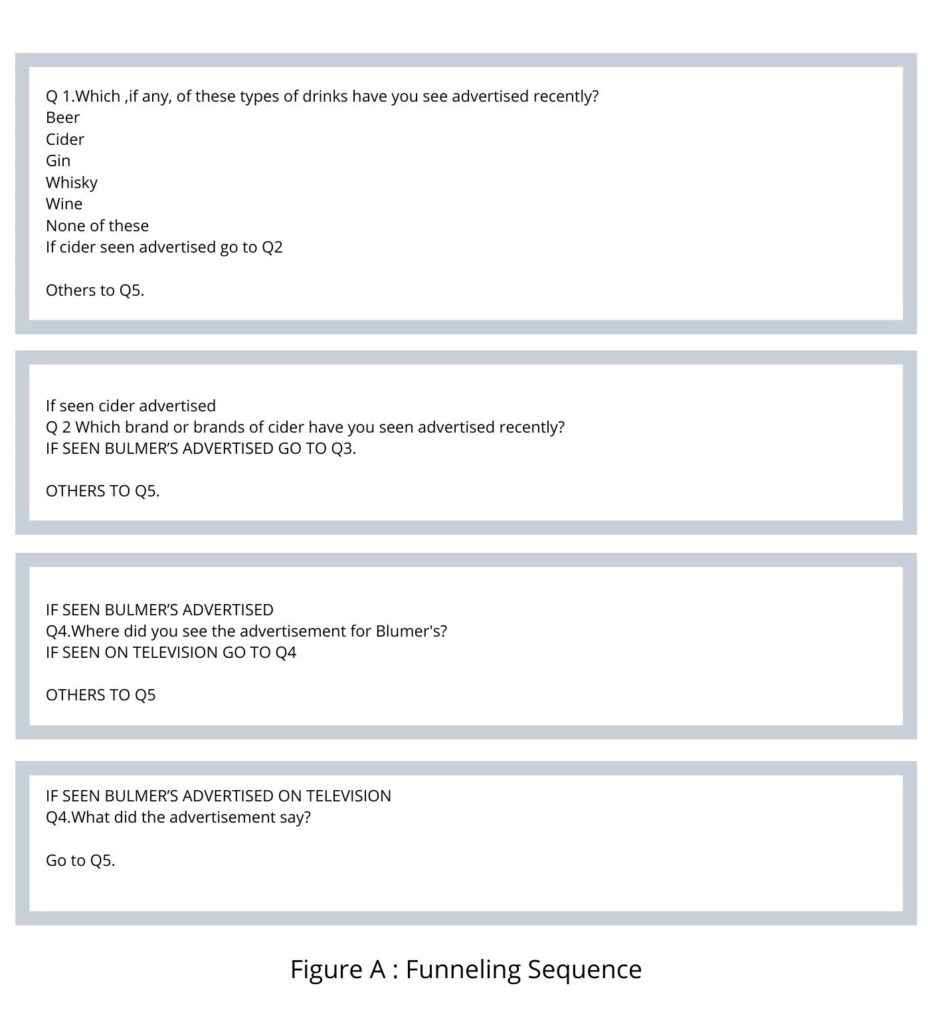There are certain rules regarding the ordering of questions that must always borne in mind. These include:
- There must be no prompting of any information before spontaneous questions on the same subject.
- The interview should normally start with more general questions relating to the topic and work through to the more specific or detailed subject matter.
- Behavioral should be asked before attitudinal questions on the same topic.
These issues should have been considered when the questionnaire was planned, but still need to be thought about as the detailed questionnaire is written.
Funneling
Funneling sequences are used to take respondents from general questions on a topic through questions that are most specific without allowing the earlier questions to condition or bias the responses to the later ones.
Typically, in a funneling sequence, whether respondents are asked a question on their response to the previous one. This means the questions are irrelevant and can be routed round them. Because people are routed out without knowing what the criteria are for continuing the question sequence, we can be more confident that the response that we obtain to final question is not biased. In the example in the figure A, we would have little confidence that there was no question that we asked in bias had we asked the one question ‘If you see any advertising for Bulmer’s cider recently on television, What did they say? ‘This question would lead to overclaiming of have seen advertising, because there is an assumption that Bulmer’s cider has been advertised on television recently. Some respondents would then claim to have seen it, even though they had not.

Funneling sequences can be complicated for respondents to follow on paper self – completion questionnaires because of routing and are best avoided. However, they can be used with any interviewer -administered questionnaire and work very well with electronic or web-based self – completion questionnaires where the routing was hidden.
Question Order Bias
Priming effects
Where there is a key question to be asked, such approval of a proposal, response to a new concept or rating of an issue, the act of asking questions about the feeling of the respondents regarding the proposal, concept or issue or prior to the key questions can have an effect on the response to it .
This can be desirable, as the researcher will want the respondents to give an answer that takes into the account their considered view. However, the researcher can suggest the respondents what they should answer. Mc Farland (1981) reported that asking a series of specific questions about the energy crisis led to a higher rating of the severity of the crisis than when the questions were not asked.
Questionnaire writers need to be aware of the influence that the prior questions can have, and write the questions and interpret the responses accordingly
Consistency effect
A particular type of priming effect is the consistency effect. This can occur because respondents are led along a particular route of the responses to a conclusion to which they can only answer one way if they are to appear consistent.
By using statements that reflect one side of the argument, in this case for and against the building of the new airport, respondents are led to Q2 along the different paths. Most people like to appear to be consistent. If they agree with the statement in Q1, it is then very difficult not to answer yes at Q2 in the first example or no in the second example .
To be even-handed, the preliminary question should contain statements that relate to both or all sides of an argument. The researcher may want to put questions to respondents about the issues before asking the key question, in order to help them to give a considered answer to that question. However, the preliminary questions must fairly represent all the issues if they are not to bias the response to key questions.
